
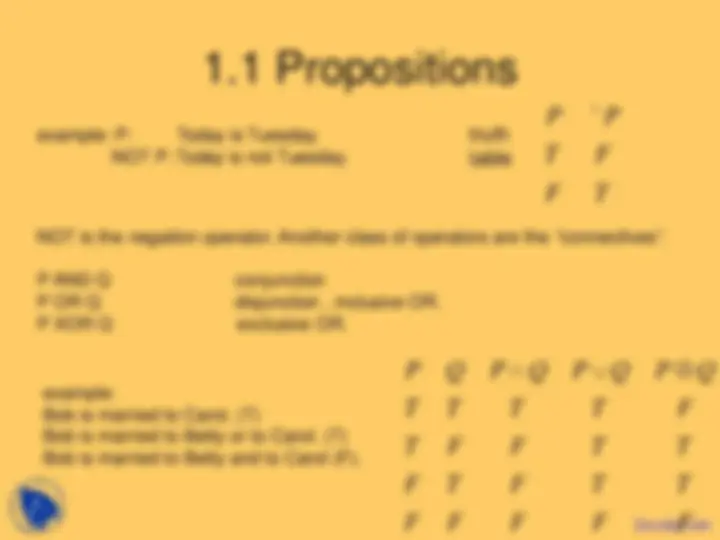
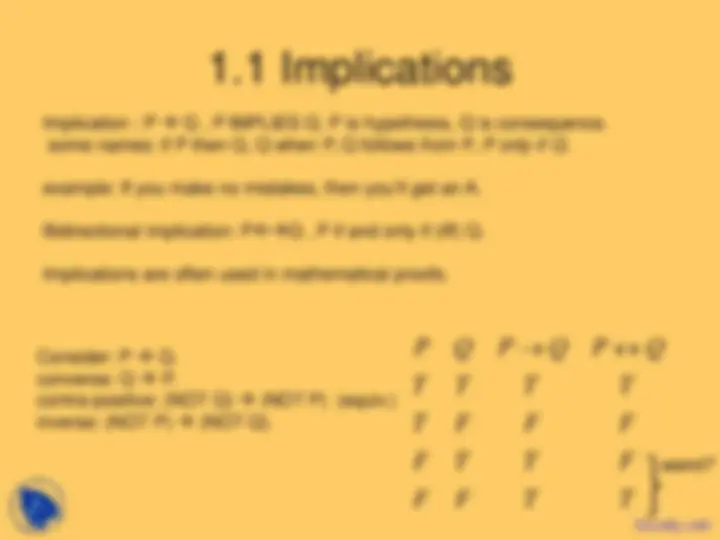
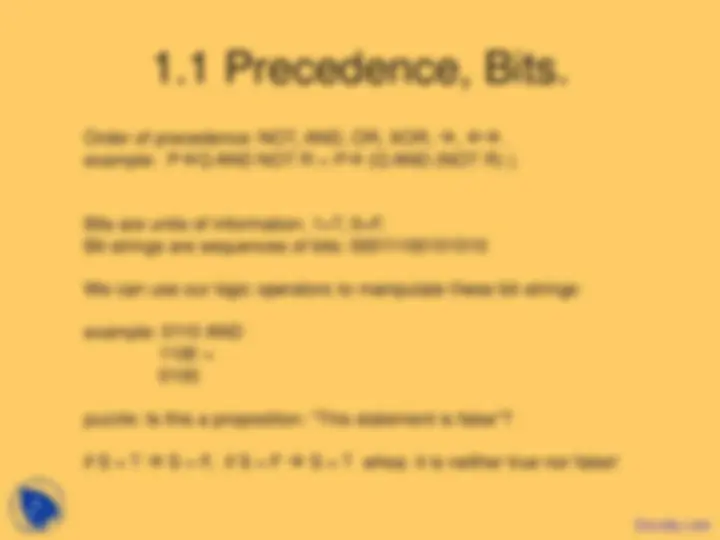
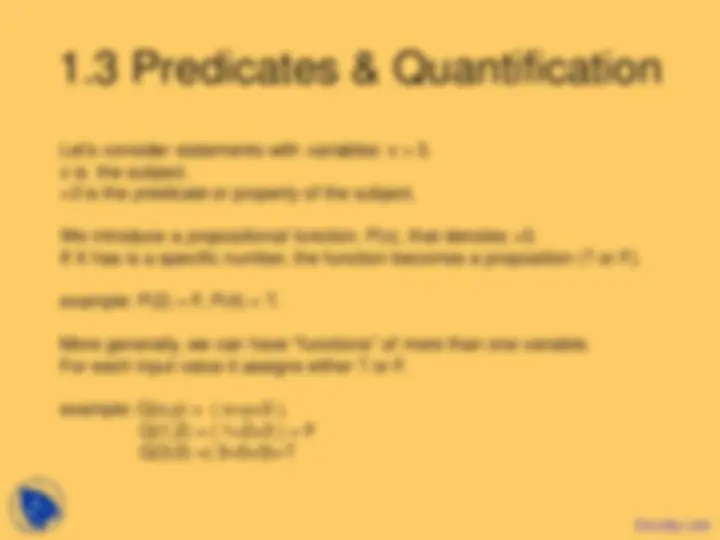
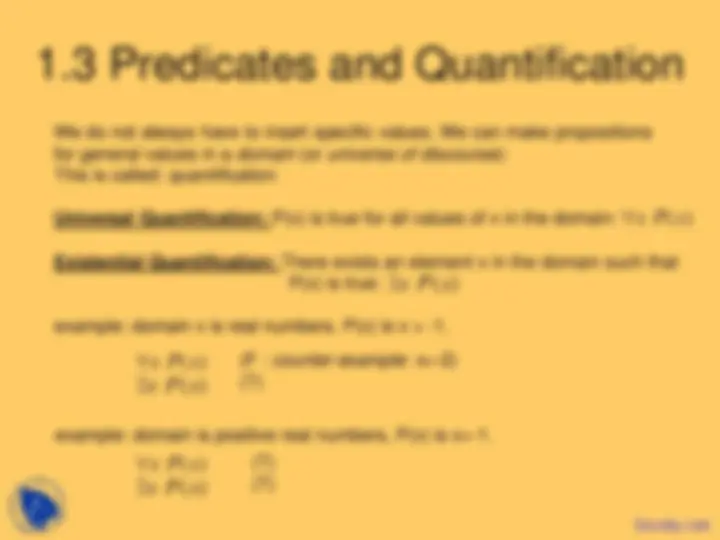
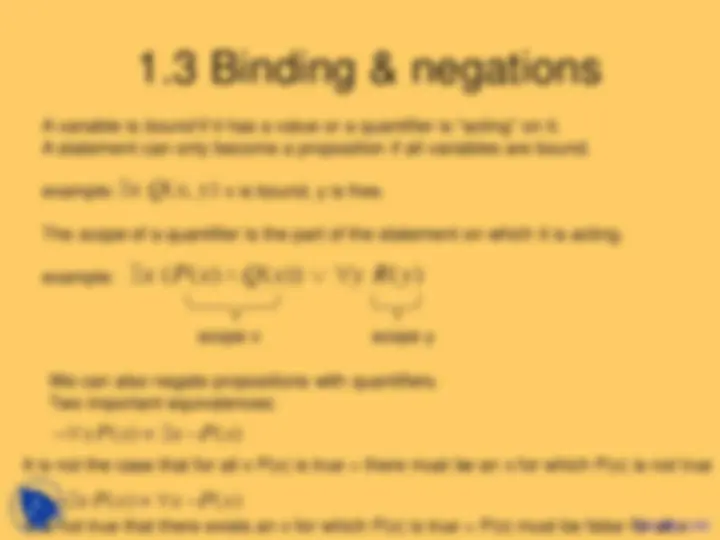


Study with the several resources on Docsity

Earn points by helping other students or get them with a premium plan


Prepare for your exams
Study with the several resources on Docsity

Earn points to download
Earn points by helping other students or get them with a premium plan
Community
Ask the community for help and clear up your study doubts
Discover the best universities in your country according to Docsity users
Free resources
Download our free guides on studying techniques, anxiety management strategies, and thesis advice from Docsity tutors
During the study of discrete mathematics, I found this course very informative and applicable.The main points in these lecture slides are:Propositions, Mathematical Reasoning, Compound Propositions, Logical Operators, Class of Operators, Negation Operator, Mathematical Proofs, Bidirectional Implication, Order of Precedence, Propositional Equivalences
Typology: Slides
1 / 10

This page cannot be seen from the preview
Don't miss anything!







Proposition: A statement that is either true (T) or false (F).
example: Toronto is the capital of Canada in 2003 (F). 1+1=2 (T).
counter-example: I love this class.
Compound Propositions: New propositions formed by existing propositions and logical operators.
Let “P” be a proposition. Then (“NOT P”) is another one stating that: It is not the case that “P”.
¬
Implication : P Q , P IMPLIES Q. P is hypothesis, Q is consequence. some names: if P then Q, Q when P, Q follows from P, P only if Q.
example: If you make no mistakes, then you’ll get an A.
Bidirectional implication: PQ , P if and only if (iff) Q.
Implications are often used in mathematical proofs.
weird?
Consider: P Q. converse: Q P. contra-positive: (NOT Q) (NOT P) (equiv.) inverse: (NOT P) (NOT Q).
Order of precedence: NOT, AND, OR, XOR, , . example: PQ AND NOT R = P (Q AND (NOT R) ).
Bits are units of information. 1=T, 0=F. Bit-strings are sequences of bits: 00011100101010
We can use our logic operators to manipulate these bit-strings:
example: 0110 AND 1100 = 0100
puzzle: Is this a proposition: “This statement is false”?
if S = T S = F, if S = F S = T whoa: it is neither true nor false!
Proving equivalences by truth tables can easily become computationally demanding: equivalence with 1 prop.: truth table has columns of size 2. equivalence with 2 prop.: ..................................................4. equivalence with 3 prop.: ..................................................8. equivalence with n prop.: ................................................... (How many times do we need to fold the NY-times to fit between the earth and the moon ?)
Solution: we use a list of known logical equivalences (building blocks) and manipulate the expression. See page 24 for a list of equivalences.
n
Let’s consider statements with variables : x > 3. x is the subject.
3 is the predicate or property of the subject.
We introduce a propositional function, P(x), that denotes >3. If X has is a specific number, the function becomes a proposition (T or F).
example: P(2) = F, P(4) = T.
More generally, we can have “functions” of more than one variable. For each input value it assigns either T or F.
example: Q(x,y) = ( x=y+3 ). Q(1,2) = ( 1=2+3 ) = F Q(3,0) =( 3=0+3)=T
A variable is bound if it has a value or a quantifier is “acting” on it. A statement can only become a proposition if all variables are bound.
example: x is bound, y is free.
The scope of a quantifier is the part of the statement on which it is acting.
example:
scope x scope y
( ) ( )
( ) ( )
xP x x P x
xP x x P x
¬∃ ≡∀ ¬
¬∀ ≡∃ ¬
We can also negate propositions with quantifiers. Two important equivalences:
It is not the case that for all x P(x) is true = there must be an x for which P(x) is not true
It is not true that there exists an x for which P(x) is true = P(x) must be false for all xDocsity.com